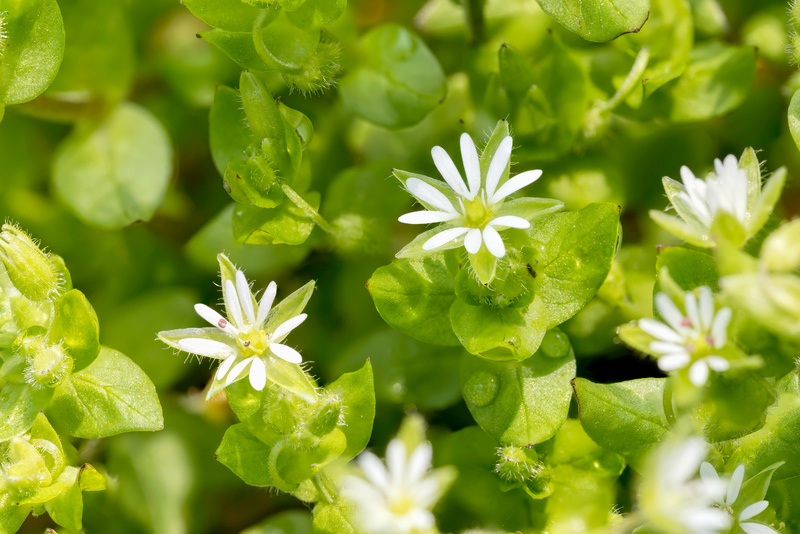Breathe Fresh Life into an Abandoned Garden Plot
Posted on 31/08/2025
Breathe Fresh Life into an Abandoned Garden Plot: Your Step-by-Step Guide
Have you discovered a neglected piece of earth, tangled and forgotten? It's time to breathe new life into an abandoned garden plot and transform it into a blooming oasis. Whether inherited, bought with your home, or discovered in a community area, revamping a neglected garden builds community, supports biodiversity, and offers personal satisfaction. This comprehensive guide will walk you through reviving and cultivating a thriving outdoor sanctuary from scratch.

Why Restore an Abandoned Garden Plot?
Rejuvenating overgrown, deserted green spaces benefits both you and the environment. Here are some compelling reasons to revive and rejuvenate abandoned garden plots:
- Boost Local Biodiversity: A restored garden supplies food, water, and shelter for pollinators, birds, and other wildlife.
- Promote Well-being: Gardening relieves stress, fosters physical activity, and connects you with nature.
- Beautify Your Space: Breathtaking flowers, fresh herbs, and lush vegetables enhance curb appeal.
- Reduce Environmental Footprint: Homegrown produce cuts transportation emissions and lowers food bills.
Breathe Energy into Old Soil
Abandoned garden plots often suffer from depleted soil, entrenched weeds, and forgotten structures. But every blank canvas holds potential. Turning your plot into a flourishing landscape involves several essential stages: clearing, planning, soil renewal, planting, and continued care. Let's break down each step, so you can inject fresh vitality into your abandoned plot.
Assessing the Condition of Your Abandoned Garden
Before you start pulling weeds or planting seeds, you need a clear understanding of what you're working with:
- Examine Existing Plants: Identify surviving plants, trees, or shrubs. Some perennials can be rescued and revived.
- Note Sunlight Patterns: Watch how much sunlight different areas get throughout the day - this influences your plant choices.
- Check for Structures: Locate irrigation systems, paths, fencing, and raised beds. Assess their condition and potential reuse.
- Test the Soil: Is it sandy, clayey, or balanced? Consider purchasing a soil test kit to check for pH and nutrients.
- Look for Hazards: Remove broken glass, wire, or potential contaminants, especially in older plots.
Record Your Findings
Use a notebook or your smartphone to take photos, draw rough maps, and list existing features. Good documentation aids effective planning.
Clearing the Abandoned Garden Plot
Restoring abandoned gardens starts with a thorough clean-up. Don't rush this stage -- diligence here paves the way for healthy growth.
- Remove Trash and Debris: Collect and safely dispose of plastics, bottles, building materials, and hazardous items.
- Cut Back Overgrowth: Use pruners, loppers, and saws to trim back invasive shrubs and high weeds. Compost healthy green matter!
- Pull or Dig Out Weeds: Target root systems to prevent regrowth, especially for persistent perennial weeds.
- Salvage Healthy Plants: Dig up perennials worth saving or transplanting before you dig or mow the entire plot.
- Break Up Hard Surfaces: Remove or repair cracked paving or compacted soil to allow for healthy water drainage and root penetration.
Tip: Wear gloves and sturdy shoes, especially if the site is overgrown or littered. Safety first!
The Importance of Patience
Breathe fresh life into long-forgotten garden plots with a measured approach. Hasty clearing can damage valuable soil structure or disrupt dormant wildlife. As you uncover the plot, you may find self-seeded gems or surprises worth nurturing.
Revitalize the Soil in Your Garden Plot
Abandoned spaces often have tired, compacted, or depleted soil needing TLC. Here's how to restore fertility and vitality:
- Test and Amend the Soil: Use your test results to add what's missing: compost for organic matter, lime for pH correction, or sand to lighten heavy clay.
- Double Dig or Loosen: Use a garden fork to aerate the soil, break up clods, and improve drainage. Avoid tilling if it risks bringing dormant weeds to the surface.
- Feed the Microbes: Add well-rotted manure, leaf mold, or worm castings. Soil life will flourish, improving plant health.
- Mulch, Mulch, Mulch: Smother weed regrowth and retain moisture by layering straw, bark, or chopped leaves.
- Solve Drainage Issues: In waterlogged spots, create raised beds or add organic matter to improve structure.
Healthy soil is the foundation of every flourishing garden restoration. Give it the time and resources it deserves!
Designing Your New Garden Paradise
Now that your garden bed is prepped and primed, it's time for the creative phase! Even a small old garden plot can become a productive, beautiful retreat with clever planning.
Set Your Goals
- What do you want from your garden? Is it a veggie patch, cut flower haven, wildlife oasis, or a family hangout?
- Prioritize low-maintenance options if you have limited time or resources.
- Choose plants to suit your climate, soil, and sunlight levels.
Sketch Out a Plan
- Map your garden beds, paths, and focal points. Use ropes or hosepipes to trial shapes before digging.
- Arrange taller plants at the back or in the center of island beds for structure and privacy.
- Mix annuals and perennials for year-round interest and quick impact.
- Add pollinator-friendly plants, herbs, and edible varieties for multi-purpose growth.
- Include areas for relaxation, like a bench, bistro set, or a birdbath.
A well-designed garden not only looks great but is easier to maintain and enjoy!
Planting - Give Your Garden Plot a Second Life
Once your soil is ready and your plan is set, it's planting time. The right plant choices help you rejuvenate your abandoned garden with vigor and visual appeal.
Best Plants for Restored Gardens
- Native Species: Locally adapted flowers and shrubs thrive in your conditions, attract wildlife, and need less maintenance.
- Perennials: Invest in plants that come back each year and slowly spread to fill space: echinacea, daylilies, rudbeckia, or hostas.
- Ground Covers: Suppress weeds and cover bare soil with creeping thyme, ajuga, vinca, or sedum.
- Annuals: Quick-growing and colorful, annuals like zinnias, marigolds, and nasturtiums offer instant gratification.
- Herbs and Veggies: Start with easy crops such as lettuce, radish, chard, and herbs like parsley and mint.
- Fruit Bushes and Canes: Berries (raspberries, currants) often thrive with little input and yield a tasty reward.
Planting Tips for Success
- Soak roots before planting and plant at the correct depth.
- Space plants for future growth--crowding encourages disease and weakens plants.
- Water deeply after planting and use mulch to lock in moisture.
- Label your plantings with sturdy twigs or markers so you remember what's where.
Maintaining Your Revived Garden Plot
Restoring a neglected garden bed is just the beginning. Consistent, thoughtful care ensures long-term success.
Essential Tasks
- Watering: Prioritize new plants. Water deeply and less frequently rather than little and often.
- Weeding: Stay ahead of unwanted visitors--the best method is little and often, especially after rain.
- Feeding: Top-dress beds with compost or organic fertilizer in spring and mid-summer.
- Pruning: Remove damaged or dead growth to encourage strong new shoots and flowers.
- Monitoring: Watch out for emerging pests, diseases, or signs of stress.
Don't forget the finishing touches: mend old gates, repaint benches, or add solar lights for evening enjoyment!
Ecological Tips for Restoring Wildlife-Friendly Garden Plots
Breathing new life into an abandoned plot isn't only about aesthetics--it's a chance to create a thriving mini-ecosystem. Try these sustainable gardening ideas:
- Compost: Recycle garden scraps and kitchen waste into rich soil amendment.
- Install Bird Feeders and Insect Hotels: Encourage biodiversity and natural pest control.
- Collect Rainwater: Save on bills and help the environment with a rain barrel or water butt.
- Avoid Pesticides: Use organic and integrated pest management practices for a chemical-free haven.
- Leave a Wild Corner: Allow a small section to grow wild for hedgehogs, toads, or native insects.
Common Challenges When Bringing an Abandoned Garden Back to Life
Every garden plot restoration has unique hurdles. Here are strategies for common problems:
- Stubborn Weeds: Try repeating mulch layers or solarize soil (cover with clear plastic for a few weeks in spring/summer).
- Poor Soil: Use raised beds with imported topsoil while improving existing ground beneath.
- Persistent Pests: Encourage natural predators and plant pest-repelling species (like marigolds or nasturtiums).
- Low Budgets: Swap cuttings and seeds with neighbors, upcycle materials, and wait for seasonal plant sales.
- Time Constraints: Start small. Focus on one bed or area at a time until you gain momentum.

Inspiring Case Studies: Abandoned Plots Restored
Community Rejuvenation
In cities worldwide, community groups have reclaimed vacant lots, transforming them into lush, shared spaces for food, relaxation, and friendship. By involving neighbors and hosting events, they breathe ongoing energy into once-overlooked corners of their towns.
Urban Oases
Residents have turned neglected urban backyards into pollinator sanctuaries with wildflowers, log piles for insects, and water features for birds. Even tiny or shaded spaces can blossom with creative planting and love.
Conclusion: Every Garden Can Start Anew
When you breathe fresh life into an abandoned garden plot, you're not just creating a beautiful haven for yourself -- you're contributing to the local landscape, supporting wildlife, and cultivating resilience.
Restoring a neglected garden takes effort, patience, and a dash of imagination. Yet every seedling, flower, and buzzing bee is a testament to your dedication. Start today, one manageable step at a time, and let your revived garden inspire both you and your community.
Quick Checklist for Revitalizing Your Abandoned Garden Plot:
- Assess the site and record features
- Clear trash, debris, and overgrowth
- Improve and feed the soil
- Design according to your needs and site conditions
- Choose a mix of low-maintenance, native, and edible plants
- Water, weed, mulch, feed, and enjoy!
Ready to inject energy and color back into your forgotten patch of earth? Breathe fresh life into that abandoned plot -- and watch it, and yourself, flourish!

